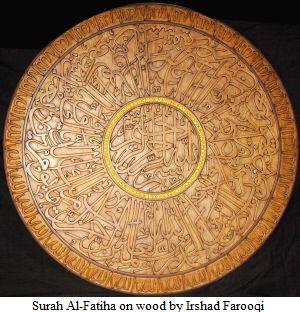 THE art of Islamic calligraphy finds its roots in early Islam. Part of its popularity lay in the way Quran stresses the importance of written word. In Surah 96 (verse 3 to 4), God is described as one Who “taught man with the pen”. The Surah 68 starts with the oath, “And by the Pen”. There are several other Suras talking about writing, viz., Surah 96 (verse 3 to 4), Surah 82 (verse 10), Surah 50 (verse 16). Naturally, the best style of writings were developed for God. As Arabic became the language of all Muslims in Arabia and elsewhere, it gave birth to beautiful new forms of Arabic script.
THE art of Islamic calligraphy finds its roots in early Islam. Part of its popularity lay in the way Quran stresses the importance of written word. In Surah 96 (verse 3 to 4), God is described as one Who “taught man with the pen”. The Surah 68 starts with the oath, “And by the Pen”. There are several other Suras talking about writing, viz., Surah 96 (verse 3 to 4), Surah 82 (verse 10), Surah 50 (verse 16). Naturally, the best style of writings were developed for God. As Arabic became the language of all Muslims in Arabia and elsewhere, it gave birth to beautiful new forms of Arabic script.

Prophet Muhammad’s son-in-law and the fourth Caliph of Islam, Ali ibn Abi Talib is considered to be the first master of calligraphy. He developed a Kufic script where the tops of alifs were twin-horned. [1] The Kufic in general is an angular script found on tombstones and coins.
The sacred nature of calligraphy ensured that in Islamic architecture inscriptions became an important means of decoration. Continue reading “Islamic Calligraphy: In search of a lifeline”